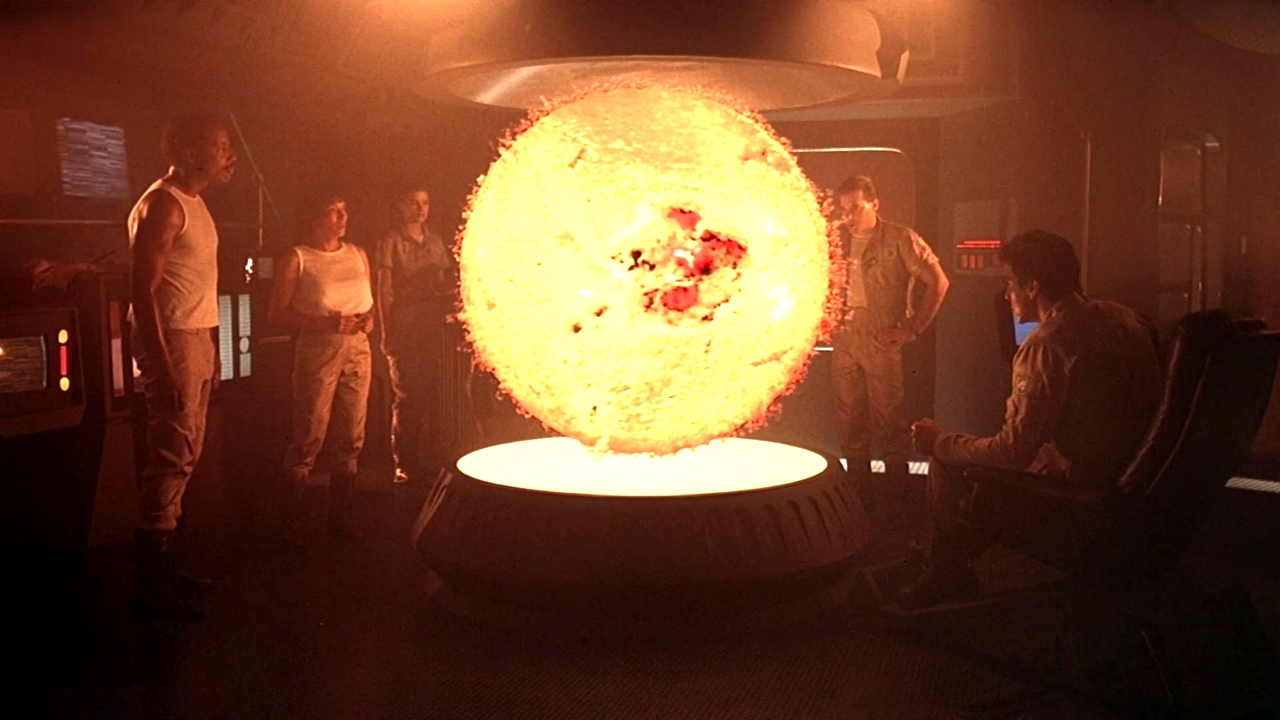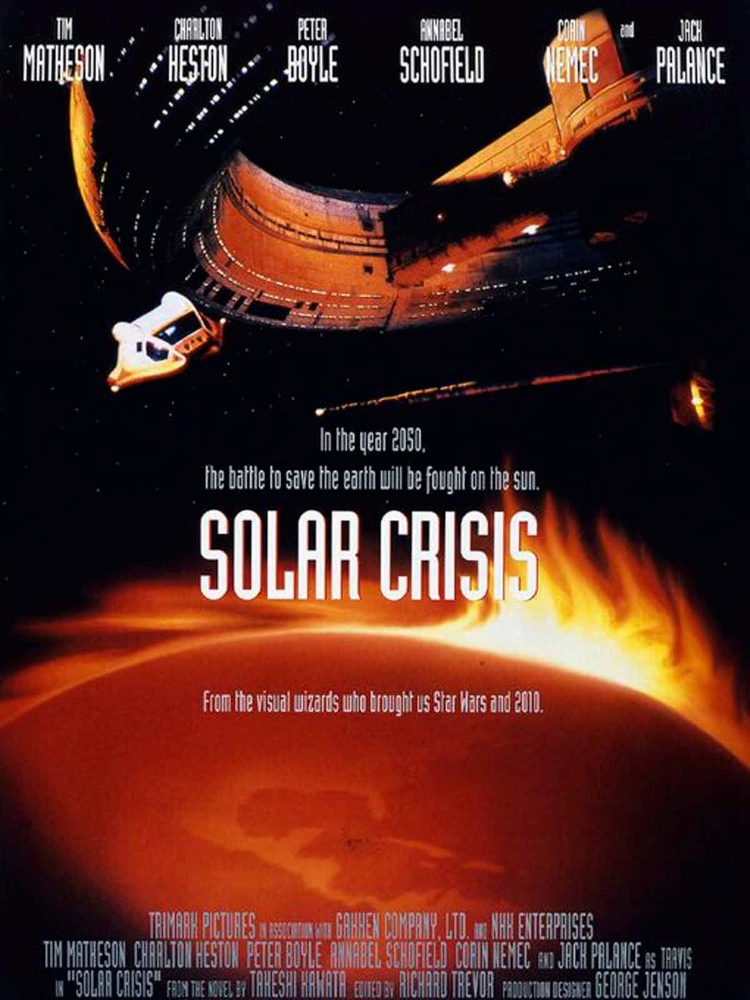Crew
Director – Allan Smithee [Richard C. Sarafian], Screenplay – Crispan Bolt & Joe Gannon, Based on the Novel by Takeshi Kawata, Producers – Richard Edlund, Morris Morishima & James Nelson, Photography – Russ Carpenter, Music – Maurice Jarre, Additional Music – Micheal Boddicker, Visual Effects Supervisor – Richard Edlund, Visual Effects – Boss Film Co, Special Effects Supervisor – Kelly Kerby, Production Design – George Jensen. Production Company – NHK Enterprises/Japan America Picture Co.
Cast
Tim Matheson (Commander Steve Kelso), Charlton Heston (Admiral Skeet Kelso), Corin ‘Corky’ Nemec (Mike Kelso), Annabel Schofield (Alex Noffe), Jack Palance (Colonel Travis Richards), Dorian Harewood (Captain Borg), Peter Boyle (Arnold Teague), David Ursin (Kovac), Silvana Gallardo (TC), Paul Koslo (Dr Gunther Haas), Tetsuya Bessho (Ken Minami), Brenda Bakke (Dr Claire Beeson), Paul Williams (Voice of Freddy)
Plot
The Earth is threatened by dangerous solar flares. A rescue mission is planned where the spaceship New Trinity, under Commander Steve Kelso, will drop an anti-matter bomb into the sun. However, Arnold Teague, head of IXL, the most powerful corporation in the world, disagrees with the findings of the scientists and plans to sabotage the mission by reprogramming Alex Noffe, the ship’s Bioform (a genetically enhanced human being) as a saboteur. Meanwhile, Steve’s teenage son Mike escapes from military academy in a stolen glider to say goodbye to his father before the mission leaves, but crashlands in the desert.
Solar Crisis is a rare filmic attempt to tackle hard science-fiction – that is sf with a credible scientific emphasis. Solar Crisis received a very negative response in genre press – one is not quite sure why. There were a number of production problems, evidenced by the director Richard C. Sarafian, best known for films such as Vanishing Point (1971) and The Man Who Loved Cat Dancing (1973), adopting the generic Hollywood pseudonym Allan Smithee and the fact that Solar Crisis was never released to cinemas in the US as originally intended but went straight to video.
There is no real reason why the film should have generated such a reaction – although there are a number of other examples where hard science-fiction is not a popular with audiences. Other than that, Solar Crisis is a surprisingly good little film, especially when measured against what advance word had led one to expect.
That is not to say that Solar Crisis is without some problems. However, the story is told well, its multi-stranded approach working extremely effectively. The science is credible and the film constructs a future of small background details – the electronic Salvation Army band, the automated trucks – that makes for conviction. Richard Edlund’s effects work – the ships, the space stations, dockings and especially the incredibly detailed solar flares – is extremely good.

The film also manages to assemble an incredible cast. Jack Palance is cast in one of his familiar cranky, eccentric roles, which he plays with typical gusto. Charlton Heston is rather good for once – the part of a self-willed but highly respected old warhorse suiting both he and the age he is at amazingly well.
The end of the film is where problems start to occur – the 2001: A Space Odyssey (1968)-like ending, while impressive, is unsatisfying. The character of Alex the Bioform remains too vague for what the plot requires of her – one would have liked to have known more of what the Bioforms were and how a genetically engineered organism can be reprogrammed, for instance.
One of the other pieces that is not credible is the character of Peter Boyle’s Teague and his amazingly suicidal decision to sabotage the mission – it is never fully demonstrated why he considers the idea of saving the world such an offensive one that he must sabotage the mission.


